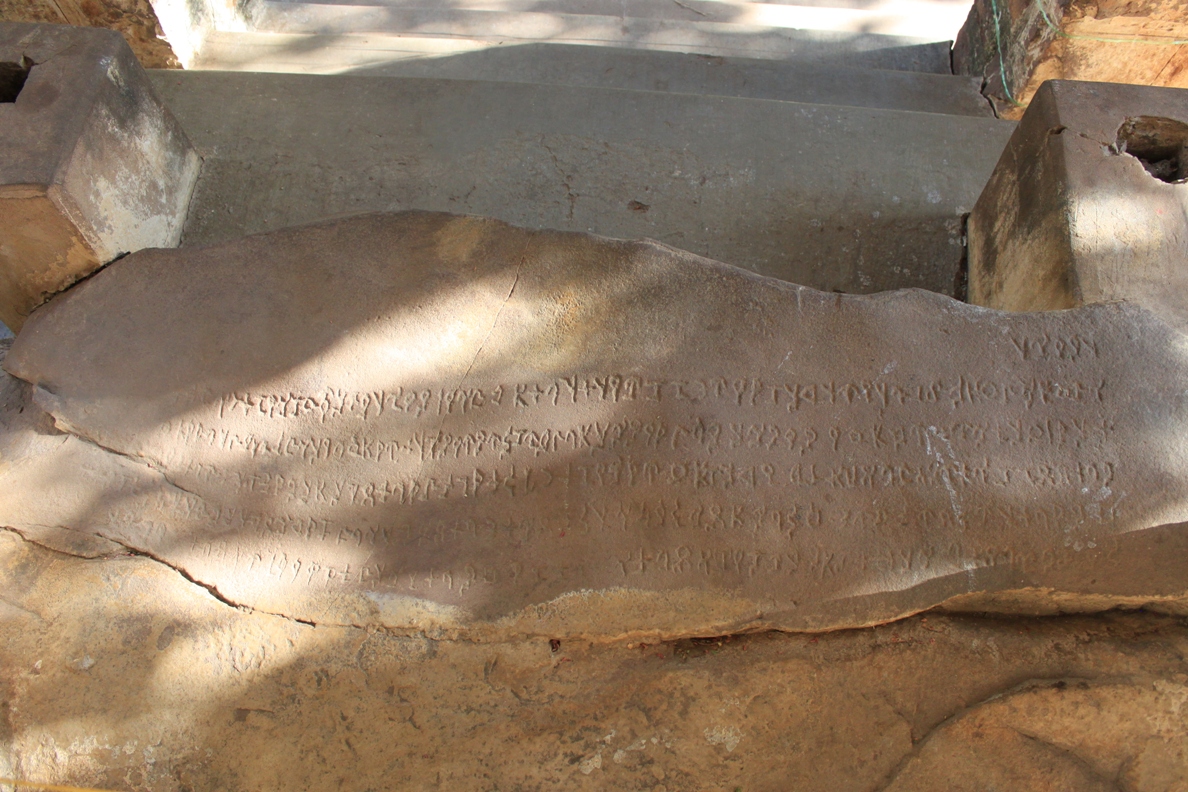Introduction – Rupnath is a famous pilgrimage spot of Katni district. It is the place of Rupnatheshvar, a name of Shiva given to this pilgrim place. Local traditions connect it with Ramayana specifying that Rama with his brother Lakshmana and wife Sita was staying here during his exile from Ayodhya. Three kunds (tanks) located here are named after these three characters of Ramayana.
General Epigraphs – Rupnath is famous among the scholars for an Ashokan edict as Ashoka held the minds of early scholars of India for a long time.
- Ashoka’s Minor Rock Edict – published in the Edicts of Asoka by V A Smith – Thus said the Beloved of the Gods. A little more than two years and a half since I have been avowedly a lay follower of the Buddha. But I was not vigorously exerting myself in the cause of Dharma for the first one year. However, it is a little more than a year since I have been devoutly attached to the Sangha and been exerting myself vigorously. The gods, who were unmingled with the people inhabiting Jambudvipa during the ages down to the present time, have now been made mingled with them by me. This is indeed the result of my exertion in the cause of Dharma. And this result is not to be achieved only by the people of superior position like myself; but even a poor man is as well able to attain the great heaven if he is zealous in the cause of Dharma. Now, this proclamation has been issued for the following purpose, viz., that both poor and the rich may exert themselves, that even the people residing in the territories outside the borders of my dominion may realize this, and that exertion on the part of the people may be of long duration. This cause will be made by me to progress more of less to one and a half times. And now, my officers, cause ye this matter to be engraved on stone wherever an opportunity presents itself. And, wherever there are stone pillars here in my dominions, this should be caused to be engraved on those stone pillars. And, with the implication of this proclamation in mind, you should go on tour everywhere throughout the district in your charge. This proclamation is issued by me when I am on a tour of pilgrimage and have spent 256 nights away from the capital.
The meaning of the last statement, about number 256, was not satisfactorily settled among the scholars for a long time. The usual meaning taken is the same which is stated above, however there are certain variations proposed by various scholars. There are many edicts which were engraved while Ashoka was on a tour but nowhere the time is reckoned like this one in the Rupnath edict. Usual mode of reckoning time is in his regnal years.
Some scholars suggest that this 256 refers to some era used by Ashoka and the start of the era may be taken from the nirvana of Buddha. D R Bhandarkar, V A Smith and Senart suggest that it is the number of the messengers or missioners who were sent by Ashoka with the copy of this Proclamation to be engraved across his kingdom. These scholars interpret the last statement of his edict as, ‘This proclamation is caused to be announced by messengers, (of whom) 256 were sent out’. Some even suggests that 256=16*16=8*8*4, and it could me an equation suggesting that he sent messengers in eight directions. However I think now it is almost settled and we may take the interpretation as stated above in the translation of the inscription.
Monuments – There are few temples, not of antiquarian interest, mostly serving the pilgrimage purpose. There are three tanks located in three different altitudes of Kaimur mountain range. The uppermost is known as Ram Kund, middle one as Lakshmana Kund and below most is Sita Kund. These tanks are constantly full by springs which issue from the hill above. Water goes successively through three tanks and out by a rivulet.
Rupnatheshvar Temple – A rent in the rock near the Sita Kund is the place where Shiva is known to have disappeared. A Shivalingam is installed inside this rent. A modern temple is constructed around this and the lingam inside is known as Rupnatheshvar. There are many small modern temples built around the complex to attract pilgrims. An annual fare is celebrated on shivaratri festival. Cunningham mentioned that this fare was discontinued after the first war of Indian Independence (referred by him as mutiny). However this festival is celebrated with good participation in present times.
How to Reach – Rupnath is on the road from Sindursi to Ranital about 4 km from Sindursi. You can reach through two roads, take left turn from Sindursi on Sihora-Bahoriband road or take right turn from Ranital on Sihora-Majholi road. Ranital is about 33 km from Sihora. Rupnath is 20 km from Ranital. Rupnath is a well known pilgrimage site so you would not find difficulty in locating this. Sometimes it is also known as Kunda among local people.
References:
- Cunningham, Alexander (1872). Report of a Tour in Bundelkhand and Malwa and in the Central Provinces (Vol VII). Archaeological Survey of India. New Delhi.
- Cunningham, Alexander (1879). Report of a Tour in the Central Province in 1873-74-75-76 (Vol IX). Archaeological Survey of India. New Delhi.
- Sen, Amulyachandra (1956). Asoka’s Edicts. The Indian Publicity Society. Calcutta.
- Smith, V A (1919). Asoka: The Buddhist Emperor of India. Oxford University Press. London.
- Sircar, D C (1957). Inscriptions of Asoka. Publication Division, Government of India. New Delhi. ISBN 8123006659.
Web References:
- http://katni.nic.in/history.htm


We need some more elaboration about the edicts of ashoka .also why roopnath would have been choosen for inscription at roopnath.